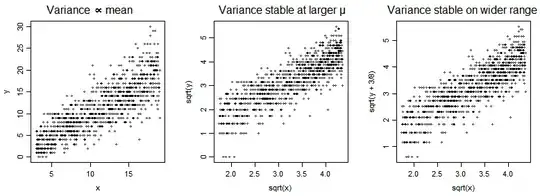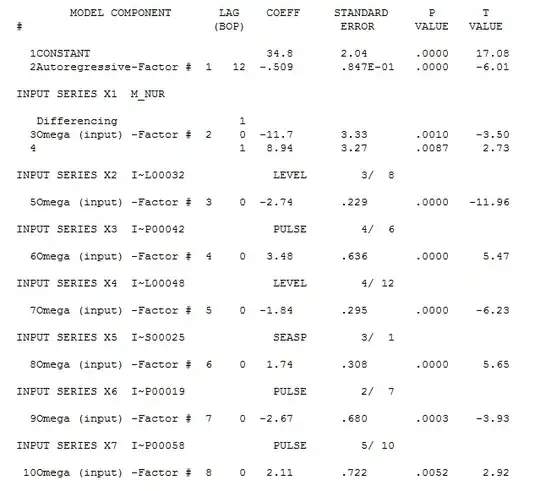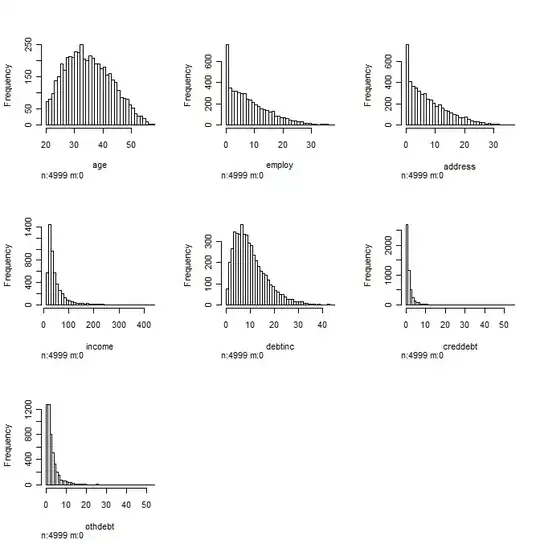I'm trying to implement a very simple one layered MLP for a toy regression problem with one variable (dimension = 1) and one target (dimension = 1). It's a simple curve fitting problem with zero noise.
Matlab - Deep Learning Toolbox
Using levenberg-marquardt backpropagation on a MLP with a single hidden layer with 100 neurons and hyperbolic tangent activation I got pretty decent performance with almost zero effort:
MSE = 7.18e-08
This is the working matlab code. Please note that the "feedforwardnet(100)" function only produces a network object with one hidden layer with 100 neurons and tanh activation and output layer with linear activation:
net = feedforwardnet(100);
net.trainParam.min_grad = 1e-25;
net.trainParam.max_fail = 50;
net.trainParam.epochs = 500;
%net1.trainParam.showWindow = false;
net.inputs{1,1}.processFcns = {};
net.outputs{1,2}.processFcns = {};
net = train(net,Train_Vars,Train_Target);
Test_Predictions = net(Test_Vars);
Accuracy = msemetric({Test_Predictions},{Test_Target});
Python - TensorFlow - Keras
With the same network settings I used in matlab there's almost no training. No matter how hard I try to tune the training parameters or switch the optimizer.
MSE = 0.12900154
I can obtain something better using RELU activations for the hidden layer but we're still far:
MSE = 0.0582045
This is the code I used in Python:
# IMPORT LIBRARIES
import numpy as np
import pandas as pd
import matplotlib.pyplot as plt
import tensorflow as tf
from tensorflow import keras
# IMPORT DATASET FROM CSV FILE, SHUFFLE TRAINING SET
# AND MAKE NUMPY ARRAY FOR TRAINING (DATA ARE ALREADY NORMALIZED)
dataset_path = "C:/Users/Rob/Desktop/Learning1.csv"
Learning_Dataset = pd.read_csv(dataset_path
, comment='\t',sep=","
,skipinitialspace=False)
Learning_Dataset = Learning_Dataset.sample(frac = 1) # SHUFFLING
test_dataset_path = "C:/Users/Rob/Desktop/Test1.csv"
Test_Dataset = pd.read_csv(test_dataset_path
, comment='\t',sep=","
,skipinitialspace=False)
Learning_Target = Learning_Dataset.pop('Target')
Test_Target = Test_Dataset.pop('Target')
Learning_Dataset = np.array(Learning_Dataset,dtype = "float32")
Test_Dataset = np.array(Test_Dataset,dtype = "float32")
Learning_Target = np.array(Learning_Target,dtype = "float32")
Test_Target = np.array(Test_Target,dtype = "float32")
# DEFINE SIMPLE MLP MODEL
inputs = tf.keras.layers.Input(shape=(1,))
x = tf.keras.layers.Dense(100, activation='relu')(inputs)
y = tf.keras.layers.Dense(1)(x)
model = tf.keras.Model(inputs=inputs, outputs=y)
# TRAIN MODEL
opt = tf.keras.optimizers.RMSprop(learning_rate = 0.001,
rho = 0.9,
momentum = 0.0,
epsilon = 1e-07,
centered = False)
early_stop = keras.callbacks.EarlyStopping(monitor='val_loss', patience=100)
model.compile(optimizer = opt,
loss = 'mse',
metrics = ['mse'])
model.fit(Learning_Dataset,
Learning_Target,
epochs=500,
validation_split = 0.2,
verbose=0,
callbacks=[early_stop],
shuffle = False,
batch_size = 100)
# INFERENCE AND CHECK ACCURACY
Predictions = model.predict(Test_Dataset)
Predictions = Predictions.reshape(10000)
print(np.square(np.subtract(Test_Target,Predictions)).mean()) # MSE
plt.plot(Test_Dataset,Test_Target,'o',Test_Dataset,Predictions,'o')
plt.legend(('Target','Model Prediction'))
plt.show()
What am i doing wrong?
Thanks


